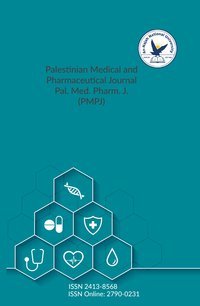Characteristics of non-alcoholic fatty liver disease in Palestinian diabetics: A cross-sectional study
Authors:
Article info
2022-05-19
2023-01-10
307 - 320
Keywords
- Fatty liver disease
- Diabetes mellites
- Non-alcoholic fatty liver
- hepatic steatosis index
Abstract
This cross-sectional study was performed to identify the factors associated with non-alcoholic fatty liver disease (NAFLD) in type 2 diabetes mellitus (T2DM) patients in Nablus, Palestine, and decrease the burden of liver diseases. Patients with T2DM who visited primary healthcare clinics in Nablus from January to April 2022 were invited [n=508] to participate. A face-to-face interview was conducted, and medical reports were used to collect the pa-tient's details. The hepatic steatosis index (HSI) was calculated as an indicator of the possibil-ity of the presence of NAFLD. Ultrasound was used to diagnose fatty liver disease (FLD) as mild, moderate, and severe. 399 Patients completed participation, with a mean age of 56.1±10.4 years; 56.1% were males, 91.2% had an HSI score ≥36, and 8.8% had an HSI score of 30-36. Moreover, 3.8% were diagnosed with mild FLD, 42.1% with moderate FLD, and 3.8% with severe FLD. Compared to patients without fatty liver disease, severe FLD pa-tients were at higher risk of having increased cholesterol levels (OR=1.047), increased HSI (OR=1.32), and diabetic retinopathy (OR=7.074). Predictors for moderate FLD have in-creased cholesterol levels (OR=1.023), glycated hemoglobin (HbA1c) (OR=1.06), HSI (OR=1.21), and age (OR=1.071). Predictors for mild FLD have increased cholesterol levels (OR=1.02), HbA1c (OR=1.312), HSI (OR=1.102), and age (OR=1.047). Decreased levels of low-density lipoproteins were associated with decreased risk of mild (OR=0.982), moderate (OR=0.97), and severe (OR=0.955) FLD. Diabetes treatment regimen, the number of years diagnosed with diabetes, hypertension, high-density lipoprotein, and triglycerides levels were not associated with FLD. In conclusion, the prevalence of NAFLD among Palestinian T2DM patients was higher than the reported global prevalence. Several modifiable (weight, HbA1c, HSI score, total cholesterol, and low-density lipoprotein levels) and non-modifiable (age and diabetic retinopathy) factors were associated with NAFLD. This research recommends a screening program for the early detection of NAFLD among Palestinian people with diabetes using ultrasound.
Characteristics of non-alcoholic fatty liver disease in Palestinian diabetics: A cross-sectional study
المؤلفون:
معلومات المقال
2022-05-19
2023-01-10
307 - 320
الكلمات الإفتتاحية
- Fatty liver disease
- Diabetes mellites
- Non-alcoholic fatty liver
- hepatic steatosis index
الملخص
This cross-sectional study was performed to identify the factors associated with non-alcoholic fatty liver disease (NAFLD) in type 2 diabetes mellitus (T2DM) patients in Nablus, Palestine, and decrease the burden of liver diseases. Patients with T2DM who visited primary healthcare clinics in Nablus from January to April 2022 were invited [n=508] to participate. A face-to-face interview was conducted, and medical reports were used to collect the pa-tient's details. The hepatic steatosis index (HSI) was calculated as an indicator of the possibil-ity of the presence of NAFLD. Ultrasound was used to diagnose fatty liver disease (FLD) as mild, moderate, and severe. 399 Patients completed participation, with a mean age of 56.1±10.4 years; 56.1% were males, 91.2% had an HSI score ≥36, and 8.8% had an HSI score of 30-36. Moreover, 3.8% were diagnosed with mild FLD, 42.1% with moderate FLD, and 3.8% with severe FLD. Compared to patients without fatty liver disease, severe FLD pa-tients were at higher risk of having increased cholesterol levels (OR=1.047), increased HSI (OR=1.32), and diabetic retinopathy (OR=7.074). Predictors for moderate FLD have in-creased cholesterol levels (OR=1.023), glycated hemoglobin (HbA1c) (OR=1.06), HSI (OR=1.21), and age (OR=1.071). Predictors for mild FLD have increased cholesterol levels (OR=1.02), HbA1c (OR=1.312), HSI (OR=1.102), and age (OR=1.047). Decreased levels of low-density lipoproteins were associated with decreased risk of mild (OR=0.982), moderate (OR=0.97), and severe (OR=0.955) FLD. Diabetes treatment regimen, the number of years diagnosed with diabetes, hypertension, high-density lipoprotein, and triglycerides levels were not associated with FLD. In conclusion, the prevalence of NAFLD among Palestinian T2DM patients was higher than the reported global prevalence. Several modifiable (weight, HbA1c, HSI score, total cholesterol, and low-density lipoprotein levels) and non-modifiable (age and diabetic retinopathy) factors were associated with NAFLD. This research recommends a screening program for the early detection of NAFLD among Palestinian people with diabetes using ultrasound.
An-Najah National University
Nablus, Palestine
Nablus, Palestine
- P.O. Box
- 7, 707
- Fax
- (970)(9)2345982
- Tel.
- (970)(9)2345560
- (970)(9)2345113/5/6/7-Ext. 2628
- [email protected]
- EIC
- Prof. Ismail Warad
